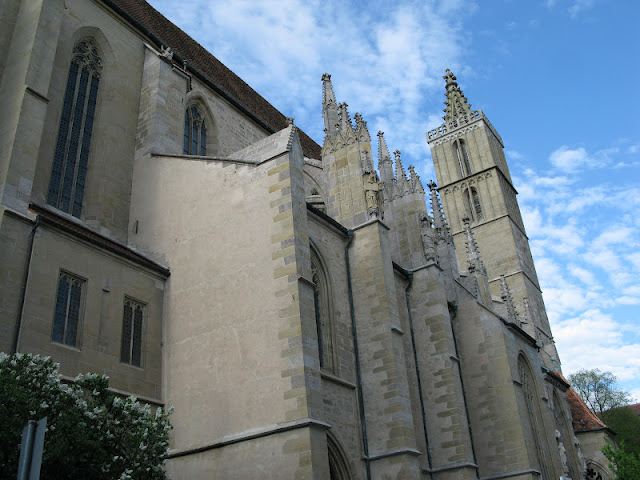This spring, we went to Munich, Bavaria's state capital. Munich is one of the beautiful cities that we have visited. It is also the headquarters of many world famous Germany companies, such as BMW, Siemens and Adidas. Besides Munich, Bavaria also has many beautiful towns as well as countryside resorts in the Alpine region.
During this trip, we also made a tour of the beautiful palaces of King Ludwig II. Ludwig became the King of Bavaria in 1864. He saw the expansion of the German Empire under the powerful Prussian King, William I, and his Ministry President, Bismarck. Bavaria became part of the Germany Federation. Ludwig retreated himself to the splendour and solitude of his palaces. Ludwig spent a lot of money in building his dream palaces and castles. He ended up in a tragic and mysterious death. His partial completed palaces now become the most popular tourist attractions in Bavaria and Germany.
Ludwig II spent his happy childhood in his father's Hobenschwangen Castle. It was reconstructed from the medieval Castle Schwanstein. Here, Ludwig built up his dream of Swan Knight.
 |
| (Hobenschwangan Castle) |
 |
| (Picturesque surrounding of Hobenschwangan Castle) |
Later, Ludwig built his new castle opposite to the Hobenschwangan Castle. The new castle is bigger and more magnificent than the former one. It is now opened to the public as Neuschwanstein with millions of visitors each year.
 |
| (Neuschwanstein - the New Swan Castle) |
 |
| (Entrance to Newschwanstein) |
Ludwig completed the Royal Villa at Linderhof during his life. He spent more time here than in his other palaces. Linderhof is a good example of Rococo style. Its house is full of grand facades and decorations. Its beautiful garden and landscaping mix well with the natural environment.
 |
| (Linderhof from hilltop) |
 |
| (Water fountain in the garden) |
Ludwig was a distant relative of the King Louis XIV of France, who built the famous Versailles. Ludwig was his great admirer and he wanted to build a similiar French royal palace in the Herrenworth island on Lake Chiemsee. The project was not completed before Ludwig's death. The royal palace at Herrenchiemsee was later completed and opened to the public in 1926.
 |
| (The royal palace at Herrenchiemsee) |
 |
| (One of the many beautiful fountains in front of the palace) |








